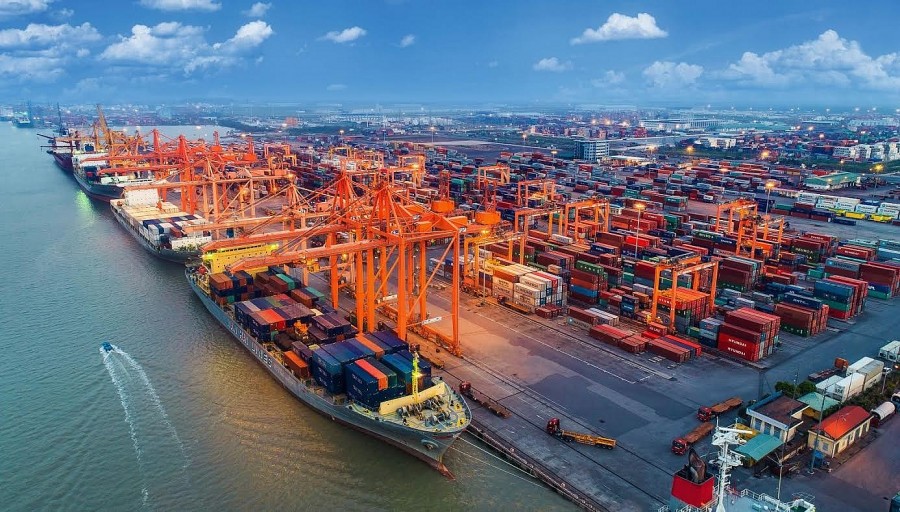 News
News
Specifically, in the first 15 days of December, the country 's exports reached more than 13.62 billion USD. 4 groups of goods with a turnover of 1 billion USD or more, including: computers, electronic products and phone components and spare parts; machinery, equipment, tools, spare parts; textile.
 |
| Import and export of goods continues to reach a record |
From the beginning of the year to December 15, total export turnover reached 355.82 billion USD. There were 8 largest export commodity groups with a turnover of 10 billion USD or more, an increase of 1 group compared to the same period last year. The new product group that achieved this impressive result is seafood with 10.52 billion USD.
Phones and components still hold the No. 1 position in terms of exports with 56.655 billion USD. The remaining product groups are computers, electronic products and components; machinery, equipment, tools and spare parts; textile; Footwear; wood and wood products; Vehicles and spare parts…
In the opposite direction, imports in the first 15 days of December reached US$ 13.96 billion, thereby bringing the total turnover from the beginning of the year to December 15 to US$ 345.465 billion.
Thus, from the beginning of the year to December 15, the country's total import-export turnover reached 701.3 billion USD. The country had a trade surplus of 10,354 billion USD.
With the scale of import-export turnover reaching a new milestone of 700 billion USD, Vietnam is currently in the group of about 20 countries and territories with the largest trade scale in the world, while in the ASEAN region is ranked second. (after Singapore).
Thus, import and export in 2022 has continued to mark a new record. In 2023, the Ministry of Industry and Trade forecasts that difficulties in the world economy and global trade cannot be overcome immediately. Vietnam's export growth will depend on many factors such as the conflict in Ukraine, the situation of inflation control, measures to prevent the Covid-19 epidemic, economic developments in markets. has a large scale of imports in the world.
However, the FTAs will continue to be implemented with the tariff reduction roadmap and the promotion of the program of socio-economic recovery and development will be the driving force to promote production and export. Attracting positive domestic and foreign investment will be the driving force to create new production capacity for export.
In that context, businesses need to continue to improve their competitiveness, create high-quality products to meet the strict standards of the world market with increasingly competitive prices. Industry associations need to continue promoting their role as a bridge between state management agencies and businesses, protecting the legitimate rights and interests of businesses in international trade disputes.
The Ministry of Industry and Trade has set out a number of solutions to support businesses, of which the main task is to promote information about FTAs. This is considered a long-term tool to maintain sustainable export growth. In addition, the Ministry of Industry and Trade also determined to promote trade promotion, focusing on traditional trade promotion programs, especially when the pandemic was basically under control in many countries around the world. At the same time, further promote the effectiveness of the e-commerce channel - a tool that we have taken advantage of in recent years. At the same time, efforts to administrative reform, efforts to reduce logistics costs to help businesses reduce difficulties.